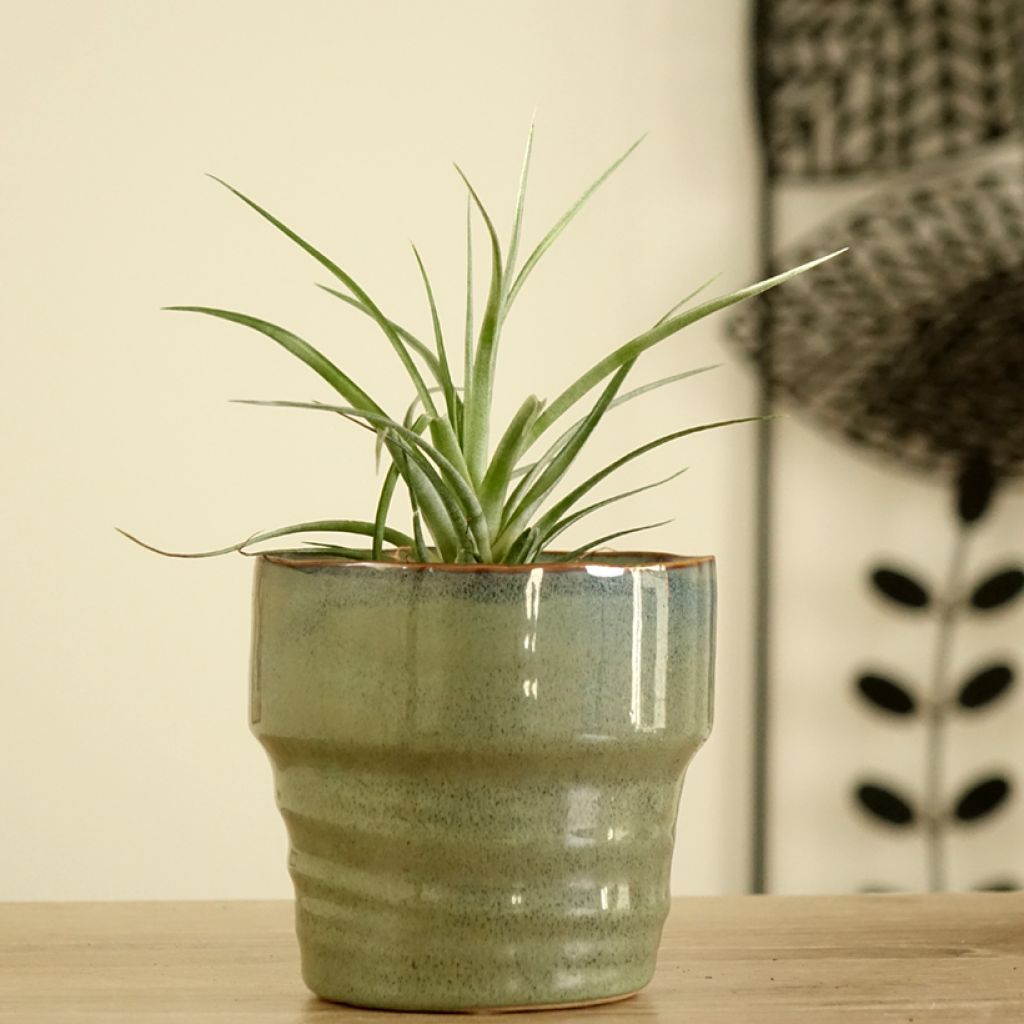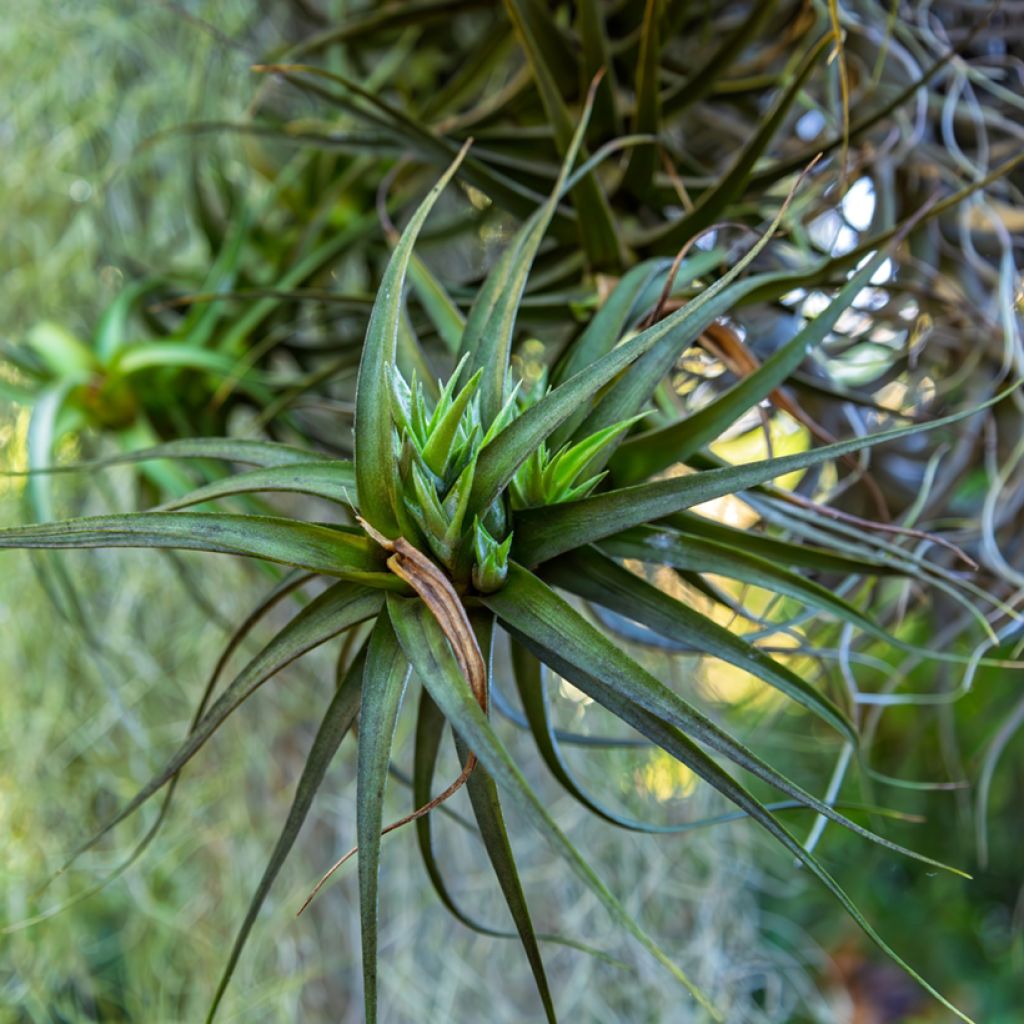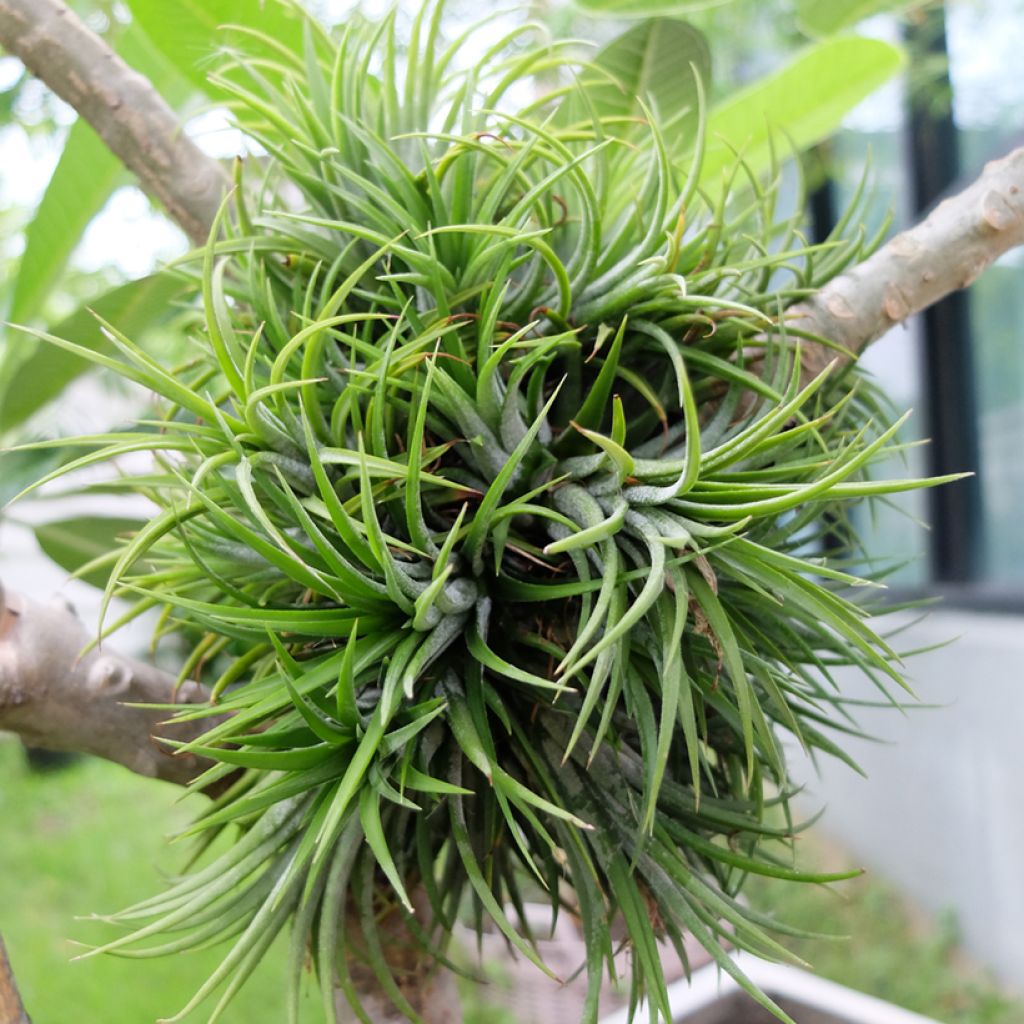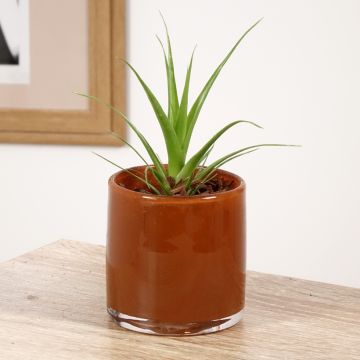

Tillandsia Mizuki - Air plant


Tillandsia Mizuki - Air plant


Tillandsia Mizuki - Air plant


Tillandsia Mizuki - Air plant


Tillandsia Mizuki - Air plant
Tillandsia Mizuki - Air plant
Tillandsia flagellata x fasciculata Mizuki
Air plant
This item cannot be shipped to the selected country
Delivery charge from 6,90 €
More information
Shipping country:
-
-
-
-
-
-
-
-
-
-
-
-
-
-
-
-
-
-
-
-
-
-
-
-
-
-
-
-
-
-
-
-
Schedule delivery date,
and select date in basket
This plant carries a 30 days recovery warranty
More information
We guarantee the quality of our plants for a full growing cycle, and will replace at our expense any plant that fails to recover under normal climatic and planting conditions.
From 7,90 € for pickup delivery and 6,90 € for home delivery
Express home delivery from 8,90 €.
Description
Tillandsia 'Mizuki', nicknamed the air plant, is an epiphytic plant that will appear to float gracefully in your interior. Its soft, slightly arched leaves form a graceful rosette that blends perfectly with contemporary or minimalist decor. This easy to care for variety thrives when hung or placed on a decorative support. Provide it with soft, indirect light and a little non-calcareous water sprayed regularly.
Tillandsia 'Mizuki' belongs to the Bromeliaceae family. The Tillandsia genus includes around 650 species of epiphytic plants native to the forests, mountains, and deserts of neotropical regions, extending from the southern United States to Argentina. The nickname "air plant" given to Tillandsia comes from their ability to live without being planted in the soil. These epiphytic plants naturally attach themselves to trees, rocks, or other surfaces using their roots, without drawing nutrients from the substrate. They absorb water and nutrients directly through their leaves via specialised structures called trichomes, which allow them to capture moisture and nutrients from the air. 'Mizuki' is a hybrid cultivar believed to result from the cross-breeding of Tillandsia flagellata and T. fasciculata. At maturity, this epiphytic plant reaches a height of 25 to 30 cm with a spread of 15 to 20 cm. Its habit is upright, with rigid, arched green leaves covered in silvery trichomes that capture moisture and nutrients from the air. Its growth is slow. When it flowers, once mature, it displays red floral spikes adorned with tubular purple flowers. This spring or summer spectacle only appears on mature plants and under adequate growing conditions. A slightly cooler period during the year tends to encourage flowering.
The Tillandsia genus is known for its adaptability and low maintenance, making it ideal for modern interiors. This plant enjoys bright light without direct sun, moderate humidity, and temperatures between 15 and 25 °C. It can be placed outdoors in summer, in a sheltered, shaded environment, but must be brought indoors before temperatures drop below 10 °C. Good air circulation is essential to avoid excess moisture and prevent diseases. Tillandsia are not considered toxic, making them suitable for environments with pets or children.
Tillandsia 'Mizuki' finds a place in bright spaces such as the living room, a modern conservatory, or even a well-lit bathroom. Ideal in a minimalist or Scandinavian decor, it can be hung in a macramé holder or placed on a sleek, design shelf. Pair it with a Tradescantia Sweetness or a Tillandsia xerographica for a "hanging garden" effect that combines elegance and exoticism. Its look also fits into a bohemian-chic environment, where it harmonises with natural materials like wood or rattan.
Report an error about the product description
Tillandsia Mizuki - Air plant in pictures


Foliage
Plant habit
Flowering
Botanical data
Tillandsia
flagellata x fasciculata
Mizuki
Bromeliaceae
Air plant
Cultivar or hybrid
Other Air plants - Tillandsia
View all →Location
Location
Maintenance and care
Potting advice, substrates and fertilisers
Houseplant care
Disease and pest advice
Maintenance and care
This item has not been reviewed yet - be the first to leave a review about it.
Haven't found what you were looking for?
Hardiness is the lowest winter temperature a plant can endure without suffering serious damage or even dying. However, hardiness is affected by location (a sheltered area, such as a patio), protection (winter cover) and soil type (hardiness is improved by well-drained soil).

Photo Sharing Terms & Conditions
In order to encourage gardeners to interact and share their experiences, Promesse de fleurs offers various media enabling content to be uploaded onto its Site - in particular via the ‘Photo sharing’ module.
The User agrees to refrain from:
- Posting any content that is illegal, prejudicial, insulting, racist, inciteful to hatred, revisionist, contrary to public decency, that infringes on privacy or on the privacy rights of third parties, in particular the publicity rights of persons and goods, intellectual property rights, or the right to privacy.
- Submitting content on behalf of a third party;
- Impersonate the identity of a third party and/or publish any personal information about a third party;
In general, the User undertakes to refrain from any unethical behaviour.
All Content (in particular text, comments, files, images, photos, videos, creative works, etc.), which may be subject to property or intellectual property rights, image or other private rights, shall remain the property of the User, subject to the limited rights granted by the terms of the licence granted by Promesse de fleurs as stated below. Users are at liberty to publish or not to publish such Content on the Site, notably via the ‘Photo Sharing’ facility, and accept that this Content shall be made public and freely accessible, notably on the Internet.
Users further acknowledge, undertake to have ,and guarantee that they hold all necessary rights and permissions to publish such material on the Site, in particular with regard to the legislation in force pertaining to any privacy, property, intellectual property, image, or contractual rights, or rights of any other nature. By publishing such Content on the Site, Users acknowledge accepting full liability as publishers of the Content within the meaning of the law, and grant Promesse de fleurs, free of charge, an inclusive, worldwide licence for the said Content for the entire duration of its publication, including all reproduction, representation, up/downloading, displaying, performing, transmission, and storage rights.
Users also grant permission for their name to be linked to the Content and accept that this link may not always be made available.
By engaging in posting material, Users consent to their Content becoming automatically accessible on the Internet, in particular on other sites and/or blogs and/or web pages of the Promesse de fleurs site, including in particular social pages and the Promesse de fleurs catalogue.
Users may secure the removal of entrusted content free of charge by issuing a simple request via our contact form.
The flowering period indicated on our website applies to countries and regions located in USDA zone 8 (France, the United Kingdom, Ireland, the Netherlands, etc.)
It will vary according to where you live:
- In zones 9 to 10 (Italy, Spain, Greece, etc.), flowering will occur about 2 to 4 weeks earlier.
- In zones 6 to 7 (Germany, Poland, Slovenia, and lower mountainous regions), flowering will be delayed by 2 to 3 weeks.
- In zone 5 (Central Europe, Scandinavia), blooming will be delayed by 3 to 5 weeks.
In temperate climates, pruning of spring-flowering shrubs (forsythia, spireas, etc.) should be done just after flowering.
Pruning of summer-flowering shrubs (Indian Lilac, Perovskia, etc.) can be done in winter or spring.
In cold regions as well as with frost-sensitive plants, avoid pruning too early when severe frosts may still occur.
The planting period indicated on our website applies to countries and regions located in USDA zone 8 (France, United Kingdom, Ireland, Netherlands).
It will vary according to where you live:
- In Mediterranean zones (Marseille, Madrid, Milan, etc.), autumn and winter are the best planting periods.
- In continental zones (Strasbourg, Munich, Vienna, etc.), delay planting by 2 to 3 weeks in spring and bring it forward by 2 to 4 weeks in autumn.
- In mountainous regions (the Alps, Pyrenees, Carpathians, etc.), it is best to plant in late spring (May-June) or late summer (August-September).
The harvesting period indicated on our website applies to countries and regions in USDA zone 8 (France, England, Ireland, the Netherlands).
In colder areas (Scandinavia, Poland, Austria...) fruit and vegetable harvests are likely to be delayed by 3-4 weeks.
In warmer areas (Italy, Spain, Greece, etc.), harvesting will probably take place earlier, depending on weather conditions.
The sowing periods indicated on our website apply to countries and regions within USDA Zone 8 (France, UK, Ireland, Netherlands).
In colder areas (Scandinavia, Poland, Austria...), delay any outdoor sowing by 3-4 weeks, or sow under glass.
In warmer climes (Italy, Spain, Greece, etc.), bring outdoor sowing forward by a few weeks.


































